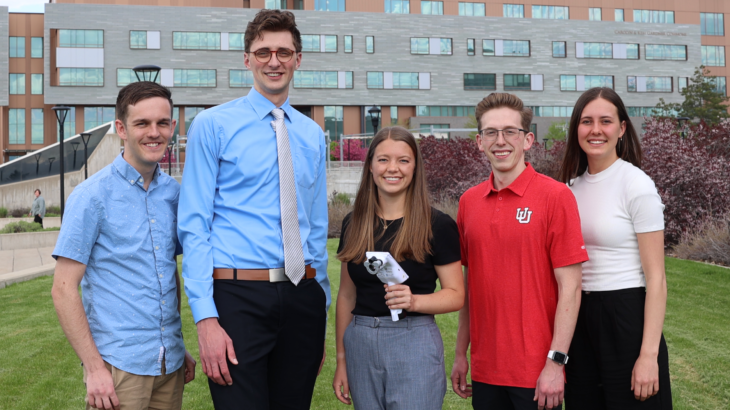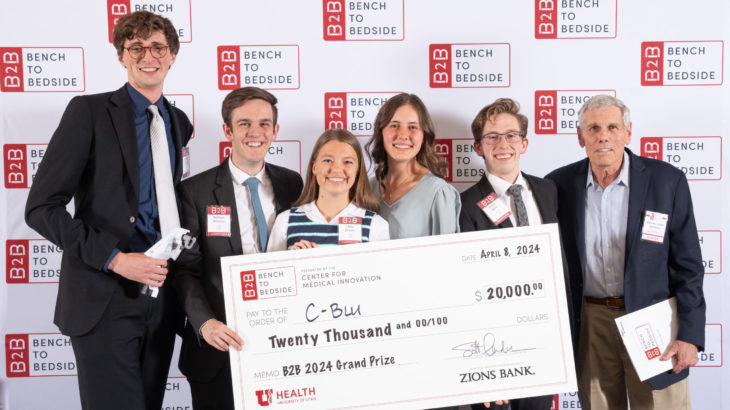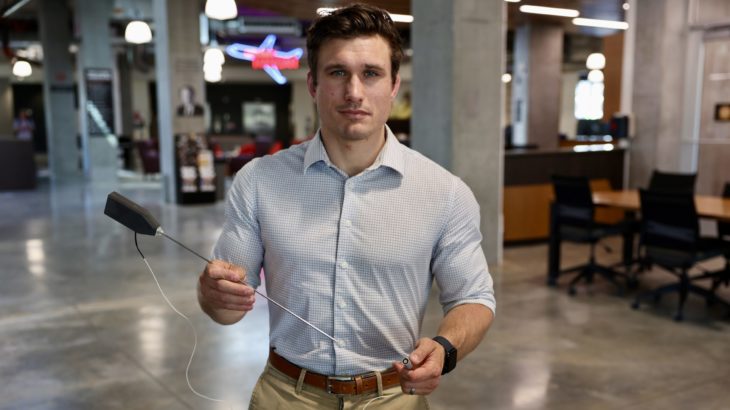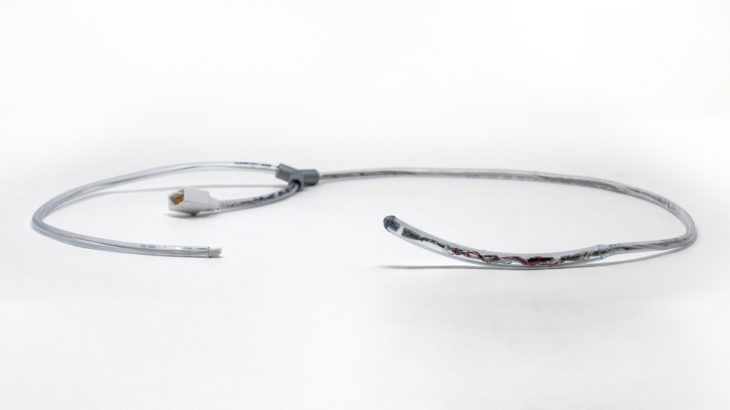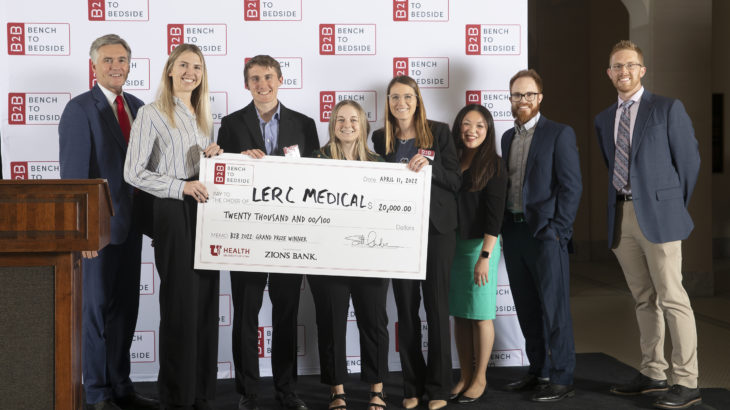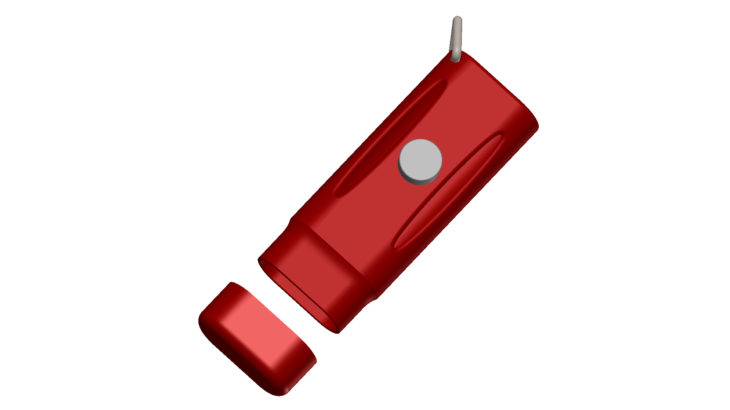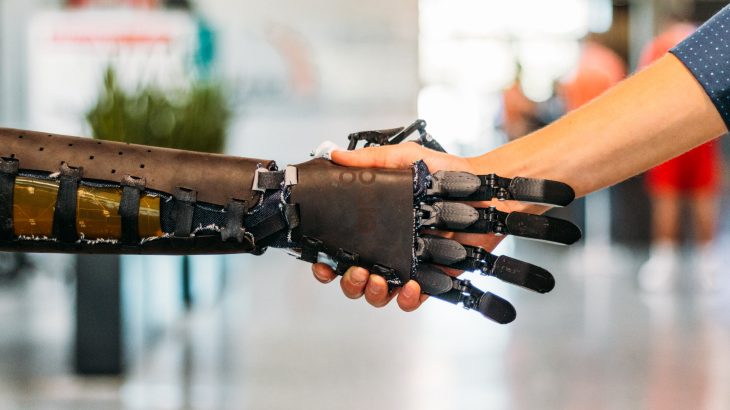C-Blu is a medical device company working to increase the accuracy of cervical cancer screening. C-Blu recently won first place at the 2024 Bench to Bedside Competition, a medical device innovation competition. The team includes five University of Utah students: Ethan Betts, Libby Brooks, Derek Lewis, Ryleigh Smith, and Nathan Wallace. The students are studying […]
Topic: Bench to Bedside
Cervical Cancer Screening Device Wins 2024 Bench to Bedside Competition
Despite a crowded field of over 30 other entries, the C-Blu team rose to the top to be named the $20,000 Grand Prize Winner at the 14th Annual Bench to Bedside Competition at the Utah State Capitol Building on April 8. Comprised of five University of Utah students, C-Blu developed a blue-light colposcope which increases […]
SoundPass: A Better Catheter for Neurosurgery
Advancements in the world of medical technology are saving and improving lives every single day, but there are enduring issues with current procedures that cannot guarantee that patients will receive perfect care. That’s why there are medical innovators working around the clock to solve these issues, with a recent example being the SoundPass team at […]
Neurosurgery Device Wins Grand Prize at 13th Annual Bench to Bedside Competition
Among the 27 student teams showcasing their next-generation medical device projects at the Bench to Bedside final event at the Utah State Capitol Building on Monday, it was the SoundPass project which earned the grand prize award and $20,000 in milestone funding in this medical-innovation competition for college students. Comprised of second- and third-year medical […]
LERC Medical: A Dual-Function Esophageal Probe
University of Utah biomedical engineering students Lauren Slattery, Emma Slominski, Robert Falconer, and Catie Augustine put the L-E-R-C into LERC Medical. The first letters of their names form the name of the company they formed to support the realization of their prototype of a dual-function esophageal probe. Esophageal probes are long probes inserted through the […]
LERC Medical Wins Grand Prize in 2022 Bench to Bedside Competition
After a multi-year hiatus, the Bench to Bedside Competition Night event returned to the Utah State Capitol Building in April, showcasing collegiate teams from across Utah during the 2021-22 competition season. More than 300 people attended the event. Led by the Center for Medical Innovation in partnership with the Lassonde Entrepreneur Institute, the Bench to Bedside […]
uAir: A Streamlined, Ultra-Portable Asthma Inhaler
If you’re not a person with asthma, you probably don’t think very often about inhalers. If you use one, however, you understand the unseen annoyances. Most importantly, you’ve probably dealt with a crucial choice: do I bring my inhaler and risk losing it because of how hard it is to store, or leave it behind […]
2021 Bench to Bedside Grand Prize Winners Create Smaller Asthma Inhaler
It all began when Teryn Holeman, a medical student at the University of Utah wanted to make life a bit easier for people who have asthma. The end result was a $25,000 grand prize for her team, uAir, at the Bench to Bedside Competition final event recently for the development of a smaller, more portable […]
GAIA: Improving Prosthetic Technology
Nick Witham, a biomedical engineering Ph.D. student at the University of Utah, founded GAIA Technologies with a goal to change lives through better prosthetics. GAIA is doing this as a prosthetics component company that builds sensor arrays to measure muscle shapes. The outcome: more affordable and higher-functioning prosthetic limbs. GAIA’s sensor array technology can be […]
2020 Bench to Bedside Grant Prize Winner Could Streamline Physical Therapy
Optima Recovery’s combination hot and cold physical therapy device won the $25,000 grand prize in the 2020 Bench to Bedside Competition earlier this month. Their device meets a common need for physical therapists, athletic trainers, and medical professionals who regularly use hot and cold treatments to promote healing and recovery to strained and injured muscles. […]
